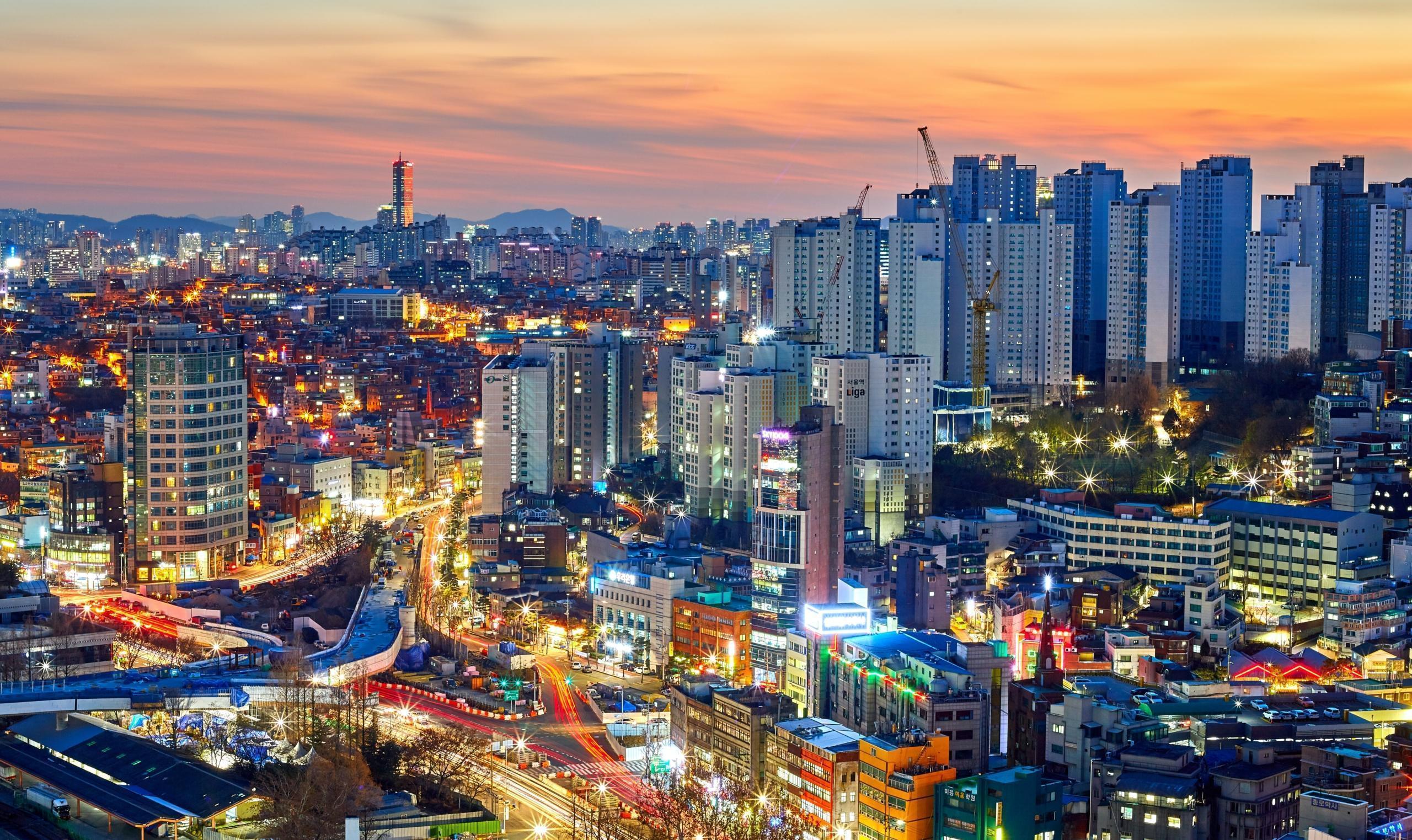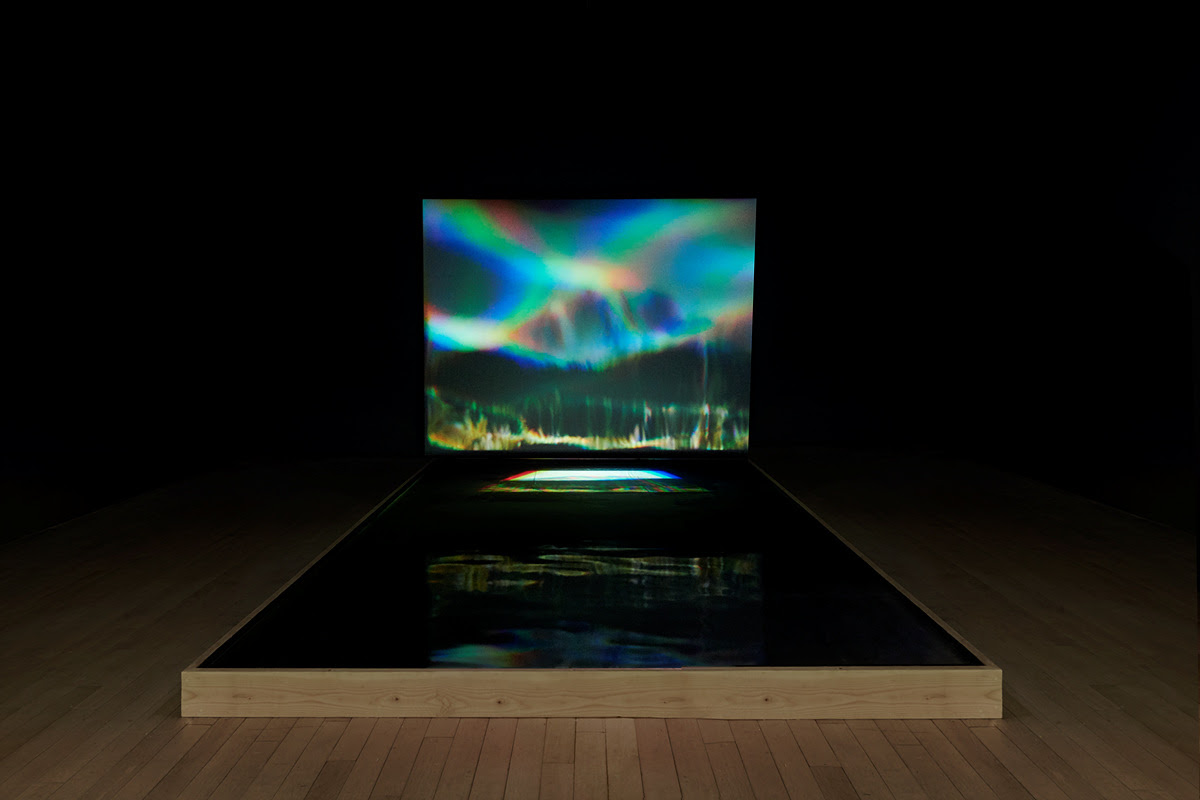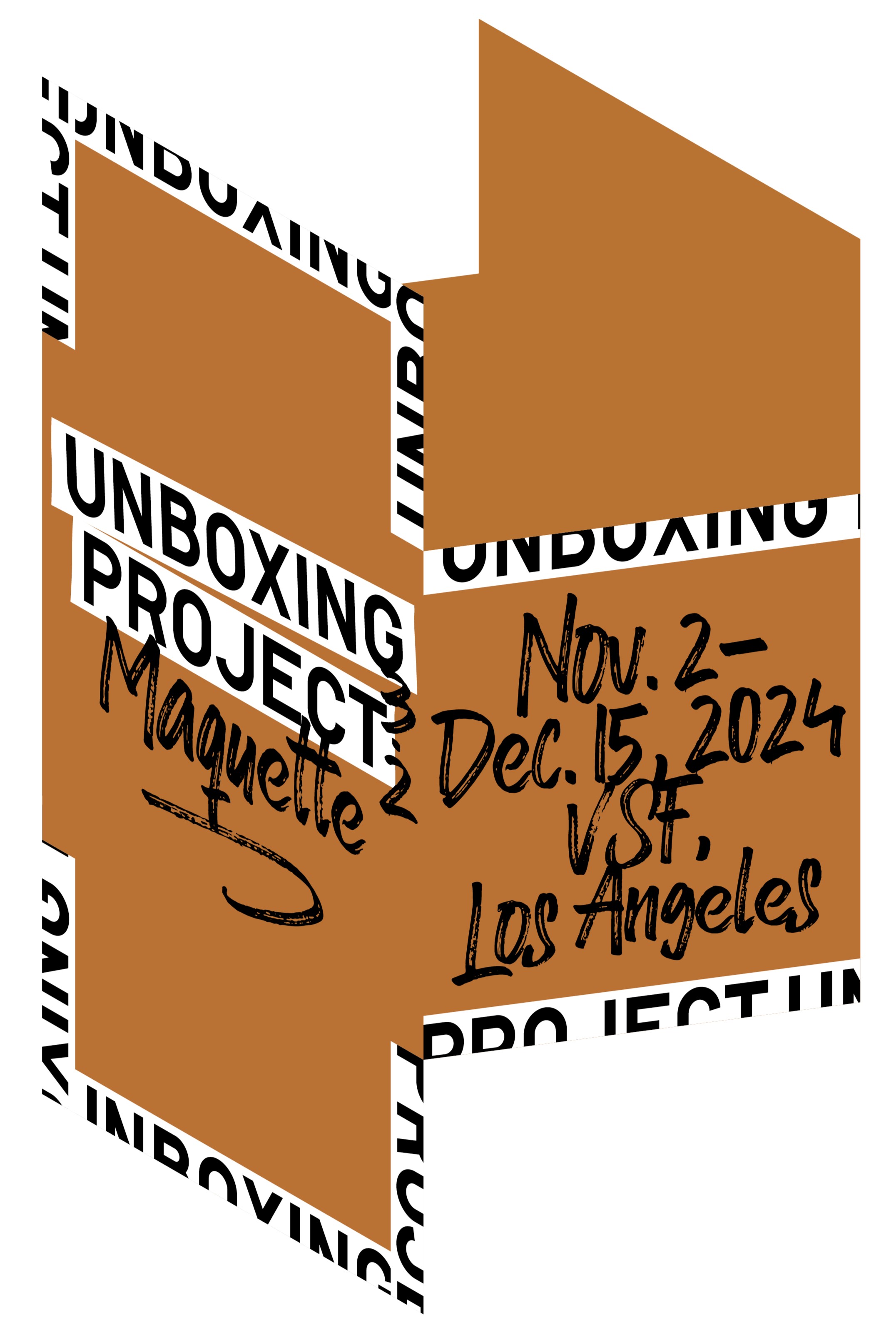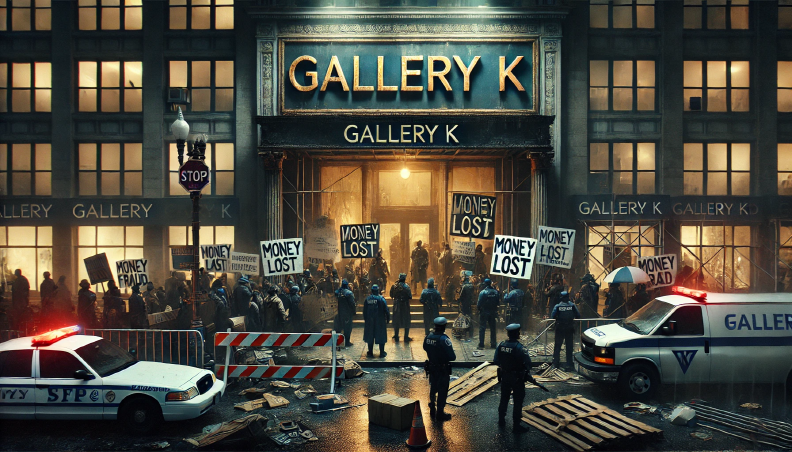The South Korean art market has seen a noticeable slowdown after the inaugural Frieze Seoul in 2022; nonetheless, Western galleries continue to open and expand in the country. The Korean art market is trying to figure out how to grow and coexist with the influx of international galleries in the country.
 Patricia Ready Gallery of Art, Vitacura, Chile. Photo by Antenna, Unsplash.
Patricia Ready Gallery of Art, Vitacura, Chile. Photo by Antenna, Unsplash.As the news of the inaugural Frieze Seoul spread in 2021, international mega-galleries flocked to South Korea. In 2022, König, Gladstone, Peres Projects, Esther Schieffer, Tang Contemporary and others made Seoul their new home.
Galleries that already had a branch in Korea have also expanded their space. Perrotin opened a Seoul branch in 2016, and its second outpost was opened in Dosan Park in 2022. Located in Hannam-dong since 2017, Pace moved to the Le Beige Building in 2021, where it has been gradually expanding its space since then. Lehmann Maupin, which landed in Korea in 2017, also moved to an expanded location in late 2021. Various Small Fires (VSF), a young gallery introducing various young artists, opened its Seoul branch in 2019.
The second Frieze Seoul has come to a close, and the Korean art market is showing a noticeable slowdown. However, international galleries still see potential in the Korean art market and are expanding their presence in the country.
White Cube
 White Cube Seoul, Horim Art Center, Gangnam-gu, Seoul. Courtesy of White Cube.
White Cube Seoul, Horim Art Center, Gangnam-gu, Seoul. Courtesy of White Cube.London-based gallery White Cube is opening a Seoul branch this fall on the first floor of Horim Art Center in Gangnam-gu, Seoul. Founded in 1993 in London, White Cube has made a name for itself by hosting solo exhibitions for young British artists (yBa), including Tracey Emin and Gavin Turk.
White Cube Seoul, which will be the gallery’s second location in Asia after Hong Kong, will consist of an exhibition space, a private viewing room and offices. White Cube Seoul will be directed by Jini Yang, who joined the gallery in 2018.
“South Korea is a country with a discerning and deeply engaged community of collectors and home to [Dansaekhwa master] Park Seo-Bo, an artist whose work moves me deeply,” said Jay Jopling, founder of White Cube. “The inaugural edition of Frieze Seoul in 2022 was a testament to the region’s growing importance in the global art market, and we look forward to returning in September for the inauguration of our new gallery.”
White Cube has branches in London, Hong Kong, Paris, New York and West Palm Beach. Korean Dansaekhwa painter Park Seo-Bo has held solo exhibitions at White Cube’s London, West Palm Beach and Hong Kong locations. In addition to Seoul, White Cube will open a new exhibition space on Madison Avenue in New York City this year.
Thaddaeus Ropac
 Thaddaeus Ropac Seoul, Fort Hill building, Hannam-dong, Seoul. Courtesy of Thaddaeus Ropac.
Thaddaeus Ropac Seoul, Fort Hill building, Hannam-dong, Seoul. Courtesy of Thaddaeus Ropac.Thaddaeus Ropac, which entered Korea in 2021, has expanded its exhibition space, from the second floor of the Fort Hill Building in Hannam-dong, Seoul, to the first floor within just two years of its landing.
On September 4, the gallery will open a solo exhibition of American artist Donald Judd in its existing exhibition space, while the new first-floor exhibition space will showcase the work of conceptual artist Joseph Beuys. The two exhibitions will coincide with Frieze Seoul, which will run September 6–10 at COEX.
“The expansion of our Seoul gallery will allow us to present a more diverse exhibition program,” said the head of the gallery, Kyu Jin Hwang. “We hope to contribute to the dynamic artistic environment and community of Seoul by presenting richer exhibitions in our expanded space.”
Peres Projects
 Exhibition view of “Cece Philips: Walking the In-Between,” Peres Projects Seoul. Courtesy of Peres Projects.
Exhibition view of “Cece Philips: Walking the In-Between,” Peres Projects Seoul. Courtesy of Peres Projects.Celebrating its 20th anniversary, Berlin-based Peres Projects opened its first Asian branch in April 2022 inside the Shilla Hotel in Jangchung-dong, Seoul. Its larger second space, a four-story building in Samcheong-dong, opened on April 28, 2023, just one year after entering the capital city. The first and second floors of the building are used as exhibition space, while the third and fourth floors are used as office space.
Founded by Javier Peres in 2002, the gallery has branches in Berlin, Germany, and Milan, Italy. It is a contemporary art gallery focusing on promoting artists who bring new voices and heightened perspectives on how to share new ideas.
The gallery’s two representing artists had solo exhibitions in art museums in South Korea; Bolivian-American artist Donna Huanca, who blends performance and painting, had a solo show at Space K in Seoul through June 8, and Black American multidisciplinary artist Richard Kennedy had a solo show at the Jeonnam Museum of Art through June 4.
“I’ve been traveling to Korea for the past 10 years, and it’s been a dream of mine to open a gallery here,” said Javier Peres, founder of Peres Projects. “This space fits the gallery’s identity of promoting and introducing promising but lesser-known artists to a wider audience.” The existing space in the Shilla Hotel is currently being planned for utilization.
The Korean Art Market Seeks Coexistence with Global Galleries
 Exterior of Le Beige Building, Seoul, South Korea. Photo by Sangtae Kim. Courtesy of Pace Gallery.
Exterior of Le Beige Building, Seoul, South Korea. Photo by Sangtae Kim. Courtesy of Pace Gallery.There is still a critical eye on the influx of foreign galleries into the capital. In fact, last year, when the inaugural Frieze Seoul was held concurrently with Kiaf SEOUL, many Korean galleries found themselves losing out to their international counterparts. Some art market experts have criticized the change, saying it has made the Korean art scene less self-sustaining and created a sense of crisis, while also criticizing the speculative attitude of Korean collectors, who are particularly fond of overseas galleries and foreign artists.
But in a global society where everything is connected, we can’t shut down the market to protect the self-sustainability of the local art market. As the Korean art market grows rapidly and aims to play a role as an Asian art market, it is inevitable for the local art world to rethink its market and open itself to the international art world. Therefore, rather than perceiving the overseas art market as taking away Korea’s purchasing power, it should be seen as an opportunity for Korean artists to expand into overseas markets and promote a win-win situation with overseas galleries.
Yet, it is important for the Korean art market to take a critical look at whether foreign galleries are trying to create such a win-win relationship with the Korean art scene. The Korean art market should not just accept the influx of foreign galleries into the country but critically examine whether they are contributing to the development of the local art scene.
International galleries with Seoul branches have told various media outlets that they want to discover new Korean artists and introduce them through their exhibitions. However, so far, the movement to discover Korean artists has not been active.
 Exhibition view of "Lari Pittman: Opaque, Translucent and Luminous" Lehmann Maupin, Seoul. (March 15–May 7, 2022). Photo by OnArt Studio.
Exhibition view of "Lari Pittman: Opaque, Translucent and Luminous" Lehmann Maupin, Seoul. (March 15–May 7, 2022). Photo by OnArt Studio.Mega-gallery Pace has presented Korean artists in three exhibitions since 2017 at its Seoul outpost. The gallery presented Lee Kun-Yong’s solo exhibition in 2019; Choong Sup Lim was presented in a two-person show with Richard Tuttle in 2022; and the gallery held a four-person exhibition of Korean women artists, including Ji Hye Yeom, Heemin Chung, Sang-ah Choi and Hyun-Sook Hong Lee.
The gallery represents Lee Ufan, Lee Kun-Yong and Yoo Youngkuk, three Korean artists who are already well-known on the international stage. Lee Ufan had numerous solo and group exhibitions at Pace’s galleries from 2008 to 2021, and Lee Kun-Yong had solo exhibitions at Pace Hong Kong in 2022, Seoul in 2019 and Beijing in 2018.
Lehmann Maupin introduced artists Suh Se Ok, Keunmin Lee and Lee Bul at its Seoul branch. Among its artists, Lehmann Maupin currently represents four internationally renowned Korean artists Lee Bul, Suh Se Ok, Do Ho Suh and Sung Neung Kyung. Sung Neung Kyung will have a solo exhibition in New York this year, and Suh Se Ok has been featured in Lehman Maupin’s galleries in Hong Kong (2020) and New York (2018). Do Ho Suh has participated in numerous solo and group exhibitions in various locations since 2000, and Lee Bul has been featured since 2008.
Gladstone Gallery, which opened in Seoul in 2021, hosted the first solo exhibition of Korean-American artist Anicka Yi but does not represent any Korea-based artists.
Thaddeus Ropac showcased emerging Korean artists by holding a three-person exhibition featuring the works of Heemin Chung (South Korea, b.1987), Sun Woo (South Korea, b.1994) and Zadie Xa (Canada, b.1983). The gallery also introduced the artist Lee Bul in its London branch.
Perrotin currently represents Park Seo-Bo, Chung Chang-Sup, Lee Bae and Gahee Park. Perrotin opened the first solo exhibition of Dansaekhwa master Park Seo-Bo in Paris in 2014 and featured Chung Chang-Sup, Lee Bae and Gahee Park’s solo show at its various locations, including Seoul.
While international galleries with Seoul branches do feature Korean artists, they are mostly focused on showcasing and selling the work of other international artists they represent rather than contributing to the development of the local art scene. The Korean art community should require that these global galleries take responsibility for developing the local art scene.
 Exterior view of Perrotin Dosan Park, Seoul. Photo by Aproject Company.
Exterior view of Perrotin Dosan Park, Seoul. Photo by Aproject Company.Yet, local galleries should also strive to be globally competitive among international galleries. Korean collectors are more likely to visit global galleries because they believe that international artists’ works have a higher return on investment, but also because they perceive that global galleries have a more specialized system. A professional system is not just about large exhibition spaces with modernized facilities but a combination of professional branding strategies, accounting systems and trading practices tailored to the art market.
Some still view the marketization of art as a commercialistic idea that harms the purity of art. However, market transparency refers to the extent to which details of market activity are open and made public.
It was easier to answer the question of an artwork’s value before the modern era when only a few factors were considered: materials used, purpose, size, and the reputation of the artist and commissioner. Today, the art market, like any other business, requires more complex and specialized systems.
Art-related businesses need to conduct objective market research and analytical data and have specialized personnel. They need to have detailed documentation, including artist bios, analysis of works, invoices, certificates of authenticity, provenance to verify the history of the artwork and other documents. Only when these systems are widespread in the industry and can be used as indicators can art be traded transparently.
This also applies to how galleries promote artists. Many experts say that the promotion of an artist’s work should be accompanied by a critical review that analyzes the context in which the work was created, how it developed, and how it relates to the contemporary art world.
Experts also say that if the Korean art market develops a system to exchange information and expertise with the international art market, the Korean art market will become more competitive globally. At the same time, if the Korean art market speaks up to the international galleries that have established themselves in Seoul, the Korean art market will be able to develop alongside the Korean art market on the international art stage.



















